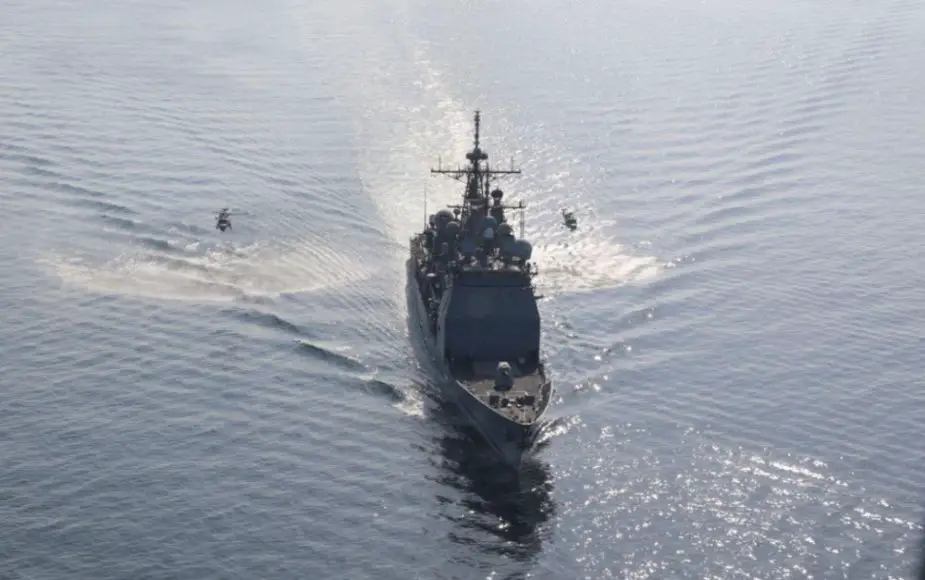Breaking news
US Naval Forces Central Command participates in Oman-led exercise Khanjar Haad 26.
According to information published by U.S. Department of Defence on March 7, 2021, the Royal Navy of Oman, Royal Air Force of Oman, United Kingdom Royal Navy, France Marine Nationale and U.S. Naval Forces Central Command (NAVCENT) participated in exercise Khanjar Haad 26, Feb 21-25.
Follow Navy Recognition on Google News at this link
 Ticonderoga-class guided missile cruiser USS Port Royal CG-73 (Picture source: US Department of Defence)
Ticonderoga-class guided missile cruiser USS Port Royal CG-73 (Picture source: US Department of Defence)
The annual Oman-led surface, air and mine countermeasures multilateral exercise is designed to strengthen capabilities in underwater diving, searching, mine identification, demolition and maritime explosive ordnance disposal operations.
During this year’s iteration of the exercise, Omani Lynx helicopters landed on the guided-missile cruiser USS Port Royal (CG 73), marking the first time this type of Omani aircraft has landed on a U.S. warship. Practicing these landings, designated as helicopter operations from ships other than aircraft carriers (HOSTAC), ensures partner nation pilots and ship crews can successfully and safely conduct cross-deck helicopter operations.
By training together, exercises like Khanjar Haad 26 allow participating naval forces to effectively develop the necessary skills to address threats to freedom of navigation and the free flow of commerce.
Participating U.S. forces included Port Royal, patrol coastal ships USS Chinook (PC 9) and USS Thunderbolt (PC 12), and mine countermeasures ships USS Gladiator (MCM 11) and USS Sentry (MCM 3).
This is one of many exercises in which the U.S. military participates with partner nations in the U.S. Central Command (CENTCOM) area of responsibility each year.
U.S. 5th Fleet area of operations encompasses about 2.5 million square miles of water area and includes the Arabian Gulf, Sea of Oman, Red Sea and parts of the Indian Ocean. The expanse is comprised of 20 countries and includes three critical choke points at the Strait of Hormuz, the Suez Canal and the Strait of Bab al Mandeb at the southern tip of Yemen.
USS Port Royal (CG-73) is a United States Navy Ticonderoga-class guided missile cruiser, the 27th and final in the class.
Originally, Port Royal was to be outfitted with the experimental shipboard mounted High Energy Laser Weapon System (HELWEPS). Based on a megawatt-class deuterium/fluorine chemical laser, HELWEPS would have replaced the standard 5-inch forward gun. HELWEPS was to have been used to destroy missiles up to about 4 kilometres (2.5 mi) away, or to burn out electro-optical sensors about 10 kilometres (6.2 mi) away. The outfitting, scheduled to occur in Naval Base Ventura County, Port Hueneme, California in 1994 was cancelled, along with all plans to install HELWEPS on Ticonderoga-class cruisers.
Four (LM2500) gas turbine engines propel Port Royal with 80,000 shaft horsepower (60,000 kW) at speeds greater than 30 knots (56 km/h; 35 mph). Two five-bladed controllable reversible pitch propellers (17-foot (5.2 m) diameter) and two rudders assist in acceleration and deceleration.


























